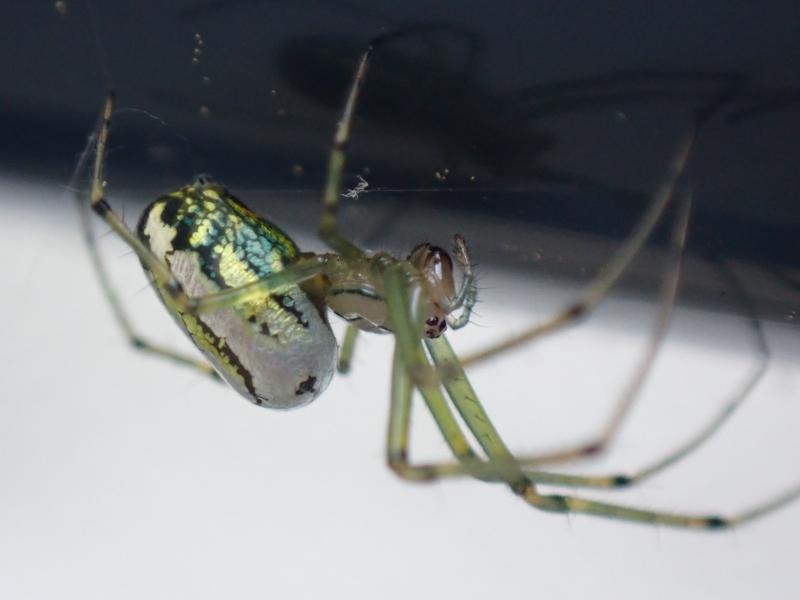The not so itsy-bitsy spider stirs up chatter in the Tri-Town
Inspired by a Dartmouth Week article on the sighting of a Northern Black Widow spider in June, or by large summer spider sightings of their own, Tri-Town residents have set social media buzzing with spider chatter.
Shown some of the photos that have circulated on Rochester and Mattaposiett Facebook groups, Blake Dinius, an entomologist from Plymouth County Extension, was able to identify two of the species that were spotted and gave some general spider facts.
Dinius said experts who study the arachnids usually measure their length by the length of their body, not by the entire length of the legs, giving them a slightly different frame of reference than the casual observer.
He was able to identify one spider posted to a Rochester Facebook group alongside a quarter for scale as a dark fishing spider, or Dolomedes tenebrosus. Dinius said this spider is one of the largest in the area. It is called a fishing spider because it sometimes lives near water, and have been known to catch small fish. However, it’s far more common to see these spiders in wooded areas.
Their bodies grow to about an inch long, according to Dinius.
He said another spider that was captured in a snapshot from a Mattapoisett beach was likely a Wolf Spider. These spiders include one species, Sand Wolf spiders, which live in sandy habitats and do not build webs, but instead rely on camouflage to blend in with a sandy background and spot prey, which they then chase down. These spiders can also have bodies that range from a quarter inch to an inch long, depending on the species.
Although the spiders may be unexpectedly large, Dinius clarifies that almost all spiders in the area are not “medically significant,” meaning that unless someone is particularly sensitive to spider bites they will not be harmed if bitten.
And even with the famed Black Widow, it’s hard to get them to bite. Dinius cited one study where researchers poked a Black Widow once, poked it repeatedly, and then squeezed it. The spider resorted to other defense mechanisms (like running away, playing dead or throwing silk) if poked, and only bit 60% of the time when it was held and squeezed close enough to a finger to reach with its fangs.
Dinius also brought up a 2003 study, which found that of 182 people who sought medical attention for spider bites, only 4% actually had spider bites.
It may not inspire readers to go make friends with their local daddy longlegs (which Dinius said are usually misclassified as spiders but are actually in the Opiliones family, but sometimes actually are cellar spiders), but at least they should have little to fear.













